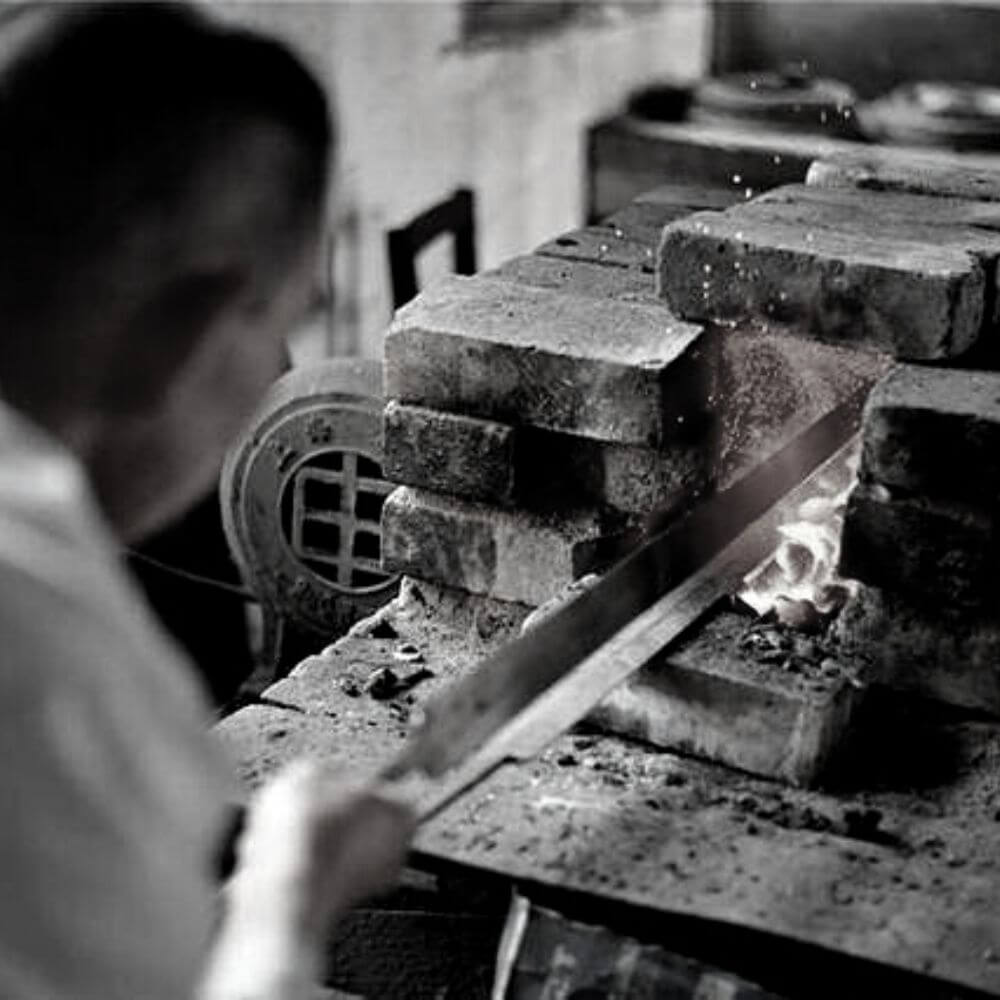What is the difference between Damascus steel and Utz steel?
The debate surrounding the world's finest Damascus swords has been ongoing for over a decade. Some argue that "Wootz steel has disappeared," "Damascus swords are lost," and "Wootz steel is the real Damascus steel," creating a diverse range of opinions on this matter.

To clarify the distinction between Damascus Steel and Wootz Steel, let's break it down in simple terms:
First, it's essential to state that Wootz Steel is Wootz Steel, and Damascus Steel is Damascus Steel; they are not the same.
Let's start with Wootz Steel:
As widely known, Wootz Steel is a high-quality steel produced by Indian metallurgists using crucible smelting.
In fact, as early as 1800 BC, the Hittites crafted iron weapons, which were the world's earliest iron weaponry. By around 500 BC, the Chinese invented cast iron. While these innovations significantly improved military strength, both types of iron had their drawbacks, being either too brittle or too soft.

Around 400 BC, metalworkers in India developed a high-carbon steel using crucible smelting, achieving an ideal balance of carbon and iron. This steel was neither too brittle nor too soft, offering a level of tensile strength that was unmatched at the time. This was the birth of the world's first true man-made steel, known as Wootz Steel. During that era, no other steel could compare to its quality, and for several centuries, India remained the leading producer of Wootz Steel.
This high-carbon steel quickly gained favor with militaries around the world, and large quantities of Wootz Steel ingots were exported to various regions. Notably, the important trading hub of Damascus City played a crucial role in this trade.
The strategic location of Damascus City as a major crossroads between Europe and Asia, along with its role as a primary trading center for Wootz Steel, made it a significant hub for importing this exceptional high-carbon steel.

They took this rare high-carbon steel and forged it into a steel suitable for crafting blades and swords, combining high hardness and strength with the necessary flexibility for effective weapons under high-stress conditions. Thus, the term "Damascus sword" was coined, as it represented the fusion of strength and flexibility.

In the Middle Ages, European Crusaders encountered Arab warriors using these swords, and the fame of the Damascus sword spread across Europe and beyond.

In summary, the key principle of Damascus Steel is the repeated forging of high-carbon and low-carbon steel to achieve a balance of strength and flexibility. Wootz Steel was primarily the high-carbon steel used to forge Damascus swords. They are not the same thing.

It's worth noting that modern developments in metallurgy and materials science have produced hundreds of steel types superior to Wootz Steel. Materials like CPM S110V, 420HC, Myodo Metals' H1, VG-10, and more are now used by artisans worldwide for forging Damascus steel. However, in its time, Wootz Steel was indeed a high-quality and rare high-carbon steel.
 Through extensive research, it's clear that South India and Sri Lanka were rich sources of iron ore, with high iron oxide content, averaging around 97.97% Fe2O3 in ore analysis from ancient mining sites. These regions also boasted dense forests providing abundant fuel, along with favorable monsoon conditions, providing unique resources for producing this high-carbon steel that were challenging to replicate elsewhere. These absolute advantages contributed to the advanced yet ancient production of Wootz Steel.
Through extensive research, it's clear that South India and Sri Lanka were rich sources of iron ore, with high iron oxide content, averaging around 97.97% Fe2O3 in ore analysis from ancient mining sites. These regions also boasted dense forests providing abundant fuel, along with favorable monsoon conditions, providing unique resources for producing this high-carbon steel that were challenging to replicate elsewhere. These absolute advantages contributed to the advanced yet ancient production of Wootz Steel.

Ancient Indian metallurgists loaded high-quality iron ore into multiple crucible furnaces and added charcoal, bark, green leaves, and other carbon sources to infuse the iron. After igniting the furnaces and using leather bellows to stoke the flames, they produced crucible steel that was exceptionally hard, containing various impurities, and exhibiting a unique crystalline pattern on its surface.

However, it's crucial to differentiate between the patterns of Wootz Steel and Damascus Steel. The pattern in Wootz Steel emerges during the casting process, includes various impurities, and appears scattered and discontinuous, like scattered stars. In contrast, Damascus Steel's pattern arises from the repeated forging of high-carbon and low-carbon steel, resulting in continuous, flowing designs, some resembling water ripples, others like roses.

The fame of the Damascus sword primarily stems from its exceptional performance, sharpness, and resilience. The distinctive pattern on the blade further enhances its appeal and mystique.
To this day, patterned blades remain a hallmark of exceptional swords in both Eastern and Western cultures.
To this day, patterned blades remain a hallmark of exceptional swords in both Eastern and Western cultures.

To this day, patterned blades remain a hallmark of exceptional swords in both Eastern and Western cultures.









Leave a comment
Please note, comments need to be approved before they are published.